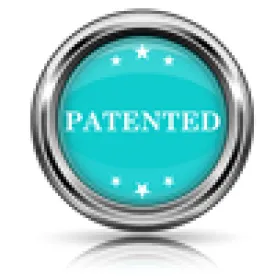Takeaway: On a motion for additional discovery, the parties should specifically discuss relevant Garmin factors for each category of additional discovery sought and opposed.
In its Decision, the board granted-in-part Patent Owner’s motion for additional discovery. Patent Owner sought additional discovery from Petitioner regarding: (a) third parties that may fund or have direction or control over the Proceedings; (b) Petitioner’s knowledge regarding certain secondary considerations of non-obviousness; and (c) the relationship between Petitioner and Petitioner’s proposed expert, Dr. Matt Spangler. Patent Owner submitted 14 proposed Requests for Production and 7 proposed Interrogatories with its Motion for Additional Discovery.
The Board began by reviewing the rules governing when additional discovery may be ordered in a post-grant review. In particular, it explained that “additional discovery may be ordered if the party moving for the discovery shows good cause as to why the additional discovery is needed” and that the Board generally considers the five Garmin factors when determining whether such good cause exists. See Garmin Int’l, Inc. v. Cuozzo Speed Techs. LLC, Case IPR2012-00001, slip op. at 6-7 (PTAB Mar. 5, 2013) (Paper 26) (informative), as modified by Bloomberg, Inc. v. Market-Alerts Pty, Ltd., Case CBM2013-00005, slip op. at 4 (PTAB May 29, 2013) (Paper 32).
Finding no substantial dispute as to Garmin factors 2 and 4 in this case, the Board addressed factors 1 (whether something useful will be found), 3 (ability to generate equivalent information by other means), and 5 (requests not overly burdensome to answer).
Beginning with the first Garmin factor, the Board explained that this factor
considers whether there exists more than “mere possibility” or “mere allegation that something useful [to the proceeding] will be found.”Garmin, slip op. at 6; Bloomberg, slip op. at 5. Under this factor, a party should provide a specific factual reason for reasonably expecting that discovery will be useful. Bloomberg, slip op. at 5. In this context, “useful” means favorable in substantive value to the moving party’s contention.
With respect to its real party-in-interest discovery requests, Patent Owner contended that Petitioner is “one of at least a dozen member breed associations of a collaboration called International Genetic Solutions (IGS),” which Patent Owner contends launched “a copy of and competitor to Patent Owner’s product.” Patent Owner argued that a director at the Petitioner is also a representative of IGS and that in Petitioner’s publication, The Register, Petitioner “discusses receiving industry support for its position against Patent Owner.” In response, Petitioner argued that the documents cited “suggest mere verbal or moral support, but provide no evidence of financial support or control of the Proceedings,” that its “collaborations” with others in the breed association are insufficient to result in a real party-in-interest issue, and that IGS “is merely a d/b/a (‘doing business as’)” of Petitioner and is registered as such with the State of Montana. The Board was “persuaded that Patent Owner’s argument for seeking information relating to the possible funding or control of the Proceedings by others is based on more than a mere possibility.”
With respect to its discovery requests concerning secondary considerations, Patent Owner alleged factual reasons for requesting evidence relating to secondary considerations of non-obviousness, including long-felt but unresolved need, failure of others, acclaim, and copying. Petitioner argued that Patent Owner did not show any “evidence to suggest a nexus between its proposed discovery regarding secondary considerations and its own invention” and therefore “failed to show the requested discovery would be expected to result in something ‘useful.’” It also argued that granting discovery concerning “copying” would lead to “an infringement trial within the trial.” The Board was “persuaded that Patent Owner’s copying argument is based on more than mere possibility” because it provided evidence that Patent Owner’s own product embodies the claimed invention and that “after Petitioner received Patent Owner’s confidential information and discontinued negotiations, Petitioner released its competing product . . . which, Patent Owner contends, infringes its patents.” The Board, however, agreed with Petitioner that Patent Owner’s other secondary consideration arguments were “too speculative to weigh in favor of granting additional discovery requests.”
Patent Owner also sought additional discovery “relating to the potential bias of Petitioner’s proposed expert witness.” The Board was “persuaded that Patent Owner’s arguments for seeking information regarding bias are based on more than mere speculation” because Patent Owner showed unrebutted evidence of [the expert’s] relationship with Petitioner outside of his Declaration in these Proceedings, such as his participation in an ASA Board Meeting . . . and writing articles for Petitioner’s publication.” Accordingly, the Board found that the first Garmin factor weighs in favor of granting the Requests “targeted at obtaining evidence of potential bias.”
The Board then considered the third Garmin factor—whether Patent Owner can generate equivalent information by other means—and concluded that “other than RFPs and Interrogatories directed at long-felt but unresolved need, acclaim, and failure of others, the third Garmin factor weighs in favor of granting the Requests.”
Next, the Board considered the fifth Garmin factor—whether the requests are “overly burdensome to answer given the expedited nature” of the proceedings. The Board noted that, [i]n evaluating the burden, [it] consider[s] the financial and human resources burden in meeting procedural deadlines and whether requests are sensible and responsibly tailored to according to genuine need.” With respect to this factor, the Board individually reviewed the discovery requests, as phrased by Patent Owner, and found that the fifth factor weighed in favor of granting certain requests but against others that were “ambiguous” or “unnecessarily broad.”
Thus, the Board concluded that “Patent Owner has met its burden for showing good cause for granting RFP Nos. 2, 3, 5, and 6 and Interrogatory Nos. 2–4 relating to real party-in-interest; RFP Nos. 9 and 11 and Interrogatory No. 5 relating to copying; and RFP No. 14 and Interrogatory Nos. 6 and 7 relating to bias.” The Board also concluded that “Patent Owner has not met its burden with respect to the other RFPs and Interrogatories” and therefore denied those Requests.



 />i
/>i

